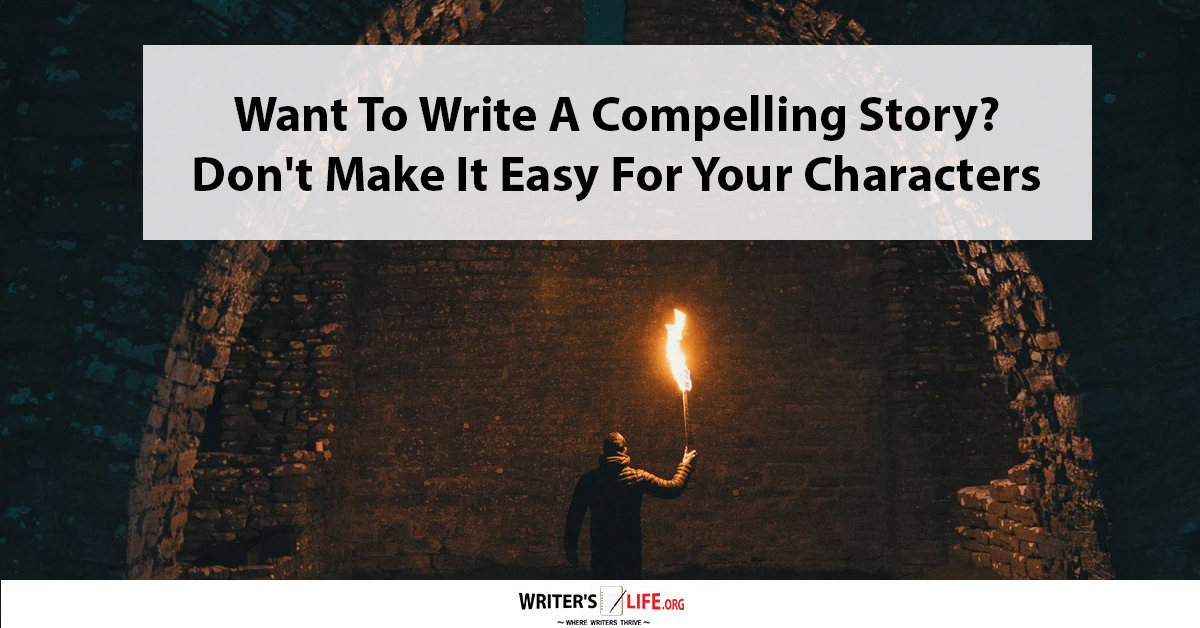- How To Tackle Jealousy In Creative Writing
- Common Submission Mistakes
- How To Stop Your Blog Becoming Boring
- The One Thing Every Successful Writer Has In Common
- How To Make Yourself Aware Of Publishing Scams
- Why Almost ALL Writers Make These Grammar Mistakes At Some Point
- 5 Tips For Authors On How To Deal With Rejection
- Top Mistakes to Avoid When Writing a Novel
- How to Avoid Common New Writer Mistakes
- 10 Mistakes New Fiction Writers Make
Want To Write A Compelling Story? Don’t Make It Easy For Your Characters

Have you got what it takes to write a compelling story? Read on to discover our top tips to make your readers sit up and pay attention.
Are you ready to write a compelling story? Let's go!
Don't make things too easy
If you want to make your story compelling and engaging, you need to make sure that your characters don't always get what they want.
Making things too easy for your characters makes for a pretty boring story. Imagine Frodo was able to glide right into Mordor and chuck that ring into the fires of Mount Doom without anyone trying to stop him, where would the tension, excitement or interest be?
What about it Romeo and Juliet met one another, liked one another, got married, and everyone was happy for them, what would be worth reading about that?
If your characters always get the girl, if they ever win the race if they consistently achieve their goals, readers will find it challenging to identify with them; they are also going to find the plot pretty tiresome.
In reality, no one gets what they want all the time, so if your character does, it's going to seem unrealistic, and frankly a little irritating. Secondly, if you don't put obstacles in the way of your protagonist achieving their goal, you won't have enough material to make a book.
So if you want to write a compelling story, it's time to start saying no to your characters.
Create competition and opposition
Creating opposition and obstacles needs to be done with care. First, you need to focus on what the character wants, what is their one big goal that drives the store forwards? Once you have this established, you can think of the potential obstacles that could get in the way.
Say the protagonist's aim is to marry the girl. Perhaps her parents disapprove. Maybe she is already married. Maybe she is his childhood sweetheart who moved away many years ago, and now he doesn't know where to find her. These are all examples of obstacles that will create a problem for your protagonist and make the reader question whether they will end up with the girl - with a happy ending or course they will, but without casting doubt the ending is already obvious, and that makes it less likely that you readers will keep on turning those pages.
Resistance can come in many forms - it can be people who get in the way, or things, situations, circumstances, etc. As soon as you start to say no, you create resistance, and with that resistance comes questions and flares up reader interest. If the parents disapprove, how will the protagonist convince them otherwise? If he doesn't know where the girl lives, how will he find her, and how does he know she'll be the same if he does?
You can still end on a high note
Of course, most novels end with the protagonist getting what they want, even if there have been many sacrifices along the way - so your story needs to work towards changing those no's to yes's in a way that's believable. You can't just have the parents change their mind and approve the weeding for no reason. There has to be a gradual change; perhaps the protagonist persistently tries to impress and then makes one grand gesture that resonates with the parents? Could the parents be reminded of their own unhappy, forced marriage as the story progresses and realize they don't want the same for their child? Maybe the protagonist and parents discover a common shared enemy or secret, which means they end up working together instead of against each other.
Of course, no's don't just come from other characters. Situations could also create obstacles. Severe weather means a car breaks down and stops the protagonist from getting where he needs to be. A locked door creates a problem if the protagonist needs to get through it or discover what's behind it. All these no's through create tension, intrigue, and interest and will keep the reader wanting to find out more.
So if you want to make your story compelling from start to finish, it's time to stop making it so easy for your characters and start thinking about how to say no to them instead!
So now you know how to write a compelling story, why not learn how to ensure your plot has pace?
Get A Free Writer's Toolkit By Visiting http://www.writerslife.org/gid





















One Comment